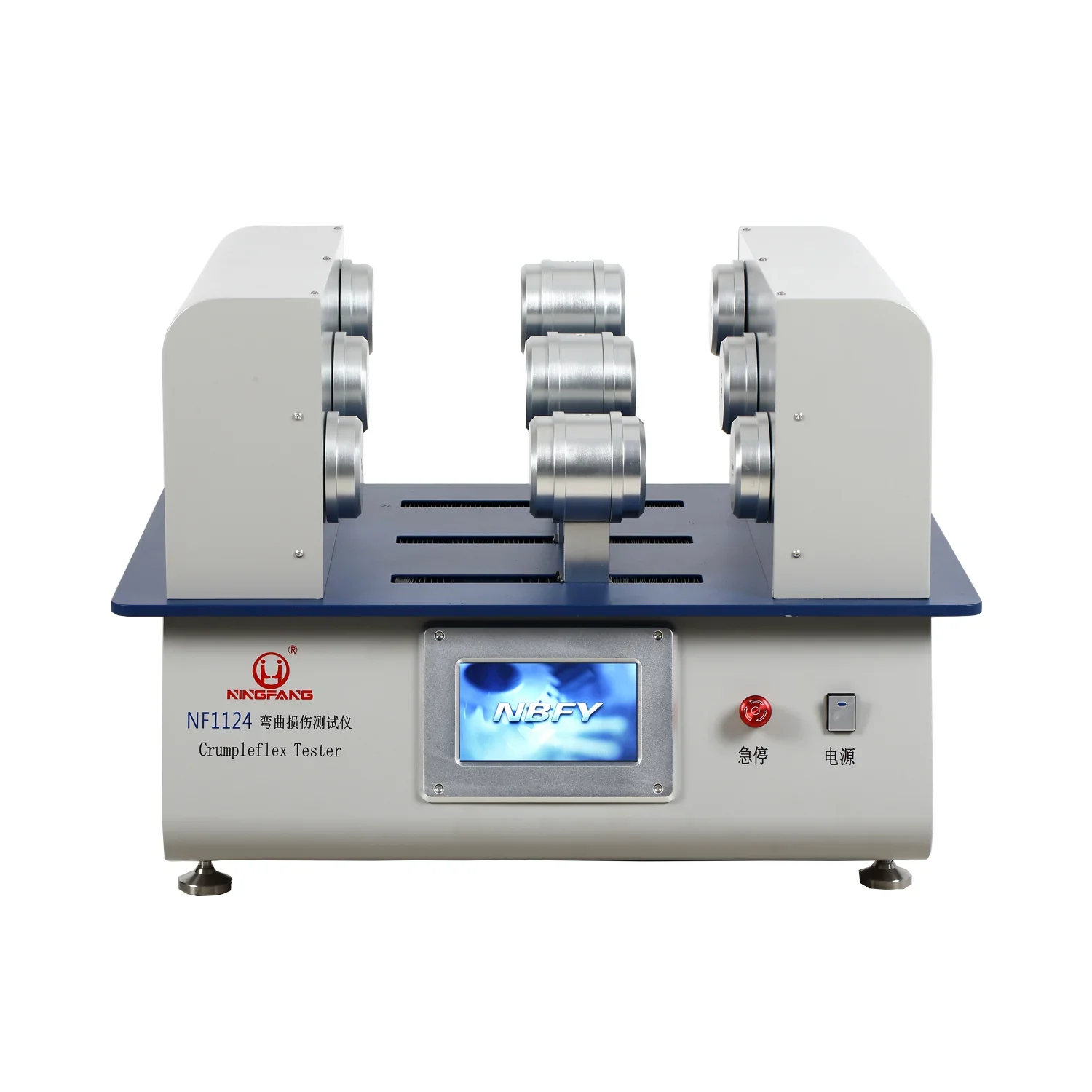In the field of textile engineering, testing the durability and performance of fabrics under various conditions is crucial. One such critical test is evaluating the bending damage that occurs when the outer layer fabric of thermal insulation clothing undergoes repeated bending. Ningbo Textile Instrument Factory, a leading manufacturer of textile testing equipment, has developed the NF1124 bending damage tester, a state-of-the-art instrument that simulates and measures this type of damage.

Overview of the NF1124 Bending Damage Tester
The NF1124 bending damage tester is a precision instrument designed to replicate the stresses and strains experienced by the outer fabric layers of thermal insulation clothing during bending. This tester allows manufacturers and researchers to assess the composite performance of fabrics, providing crucial insights into their durability and suitability for specific applications.
Key Features
1. Precision Mechanics: The tester's mechanics are designed to ensure accurate and consistent bending movements, replicating real-world conditions.
2. Versatility: The tester can be configured to simulate different bending angles and frequencies, making it suitable for testing a wide range of fabrics.
3. Ease of Use: The intuitive user interface and automated testing procedures make the tester easy to operate and maintain.
4. Data Analysis: Advanced software is integrated to capture, analyze, and present test results in a comprehensive manner.
Technological Advancements
The NF1124 bending damage tester incorporates several technological advancements that set it apart from traditional testing methods. These include:
1. High-precision Sensors: The tester utilizes high-precision sensors to accurately measure fabric deformation and damage during testing.
2. Dynamic Control System: A sophisticated dynamic control system ensures smooth and consistent bending movements throughout the testing process.
3. Automated Testing Procedures: The tester can be programmed to perform automated testing sequences, reducing operator error and improving efficiency.
Applications of the NF1124 Bending Damage Tester
The NF1124 bending damage tester has numerous applications in the textile and apparel industries. Some of its key uses include:
Quality Control
Manufacturers can use the tester to ensure that their fabrics meet specified performance standards. By testing fabrics at different stages of production, manufacturers can identify potential issues early on and make necessary adjustments to improve quality.
Research and Development
Researchers can utilize the tester to evaluate the performance of new fabrics and materials. The tester's precision and versatility allow researchers to explore different fabric combinations and treatments, optimizing performance for specific applications.
Compliance Testing
The tester can be used to verify that fabrics comply with relevant industry standards and regulations. This is particularly important for fabrics used in safety-critical applications, such as fire-resistant clothing or protective gear.
Conclusion
The NF1124 bending damage tester from Ningbo Textile Instrument Factory is a game-changer in the field of textile testing. Its ability to accurately simulate and measure fabric damage under bending stress provides crucial insights into fabric durability and performance. With its precision mechanics, versatility, ease of use, and advanced data analysis capabilities, this tester is a must-have for any textile manufacturer or researcher looking to optimize fabric performance.
https://img01.71360.com/w3/868edg/20230913/979fe33bed2bbbb6b398c73b938e5a32.webp?ct=webp







